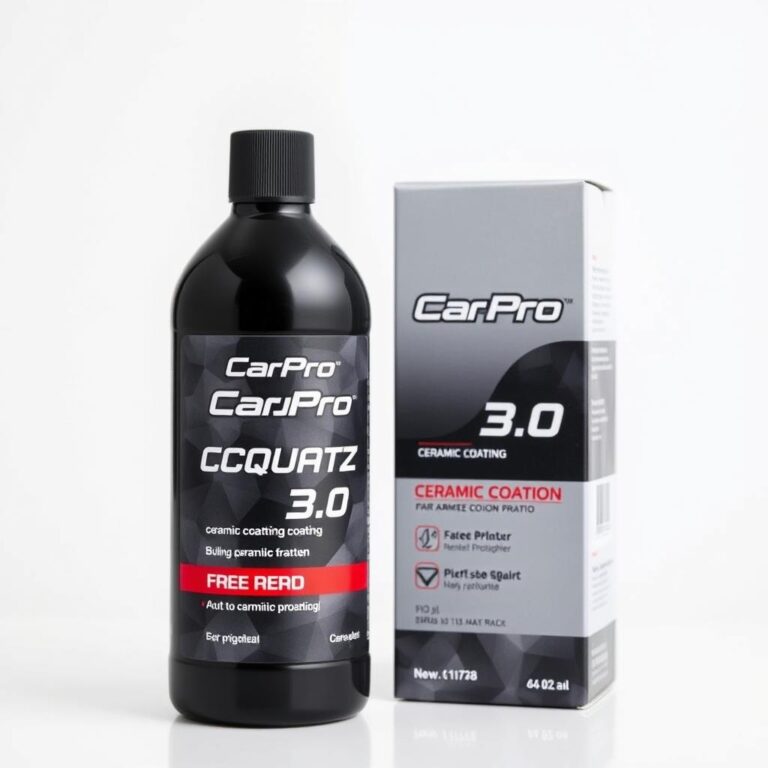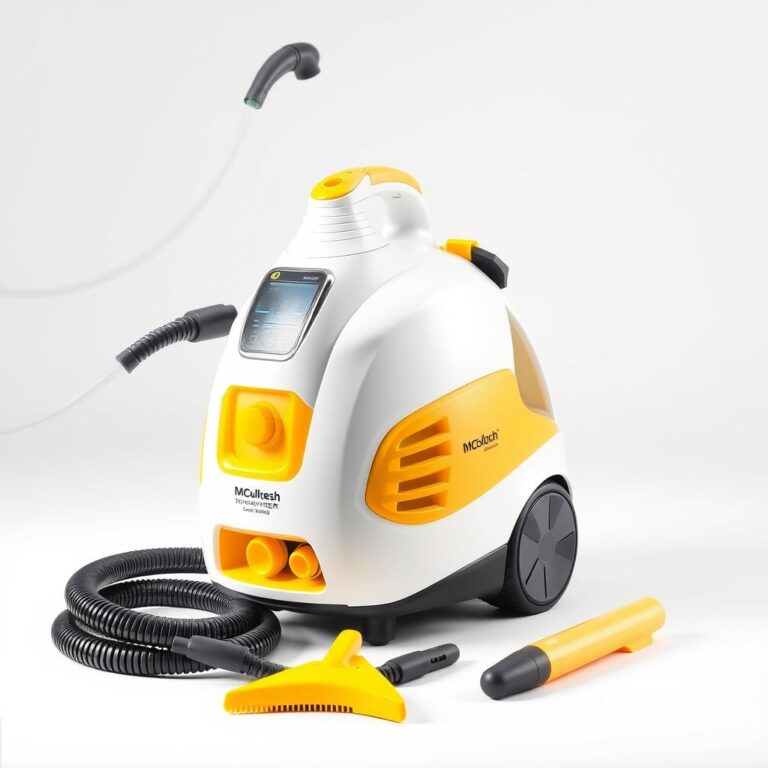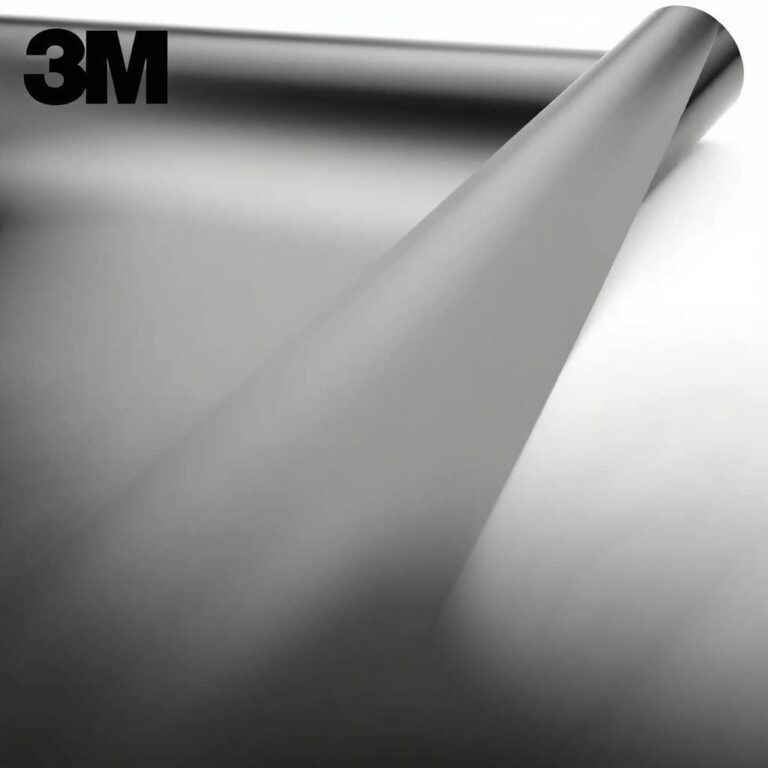Optimal Tips for Best Way to Clean Car Windows Inside
Want a perfectly clear view through your car’s windows? Start by cleaning the inside glass first using an ammonia-free cleaner. This method safeguards your window’s tint and leaves no streaks. Finish by drying for a mirror-like shine.
This guide is all about safe, clear, and easy steps. We compare different towel types and cleaner ingredients. It’s about finding a no-streak method that works every day, whether it’s sunny or raining.
The method is straightforward and based on facts. Use microfiber cloths with a specific weave and thickness. Choose ammonia-free cleaners from top brands for minimal residue. And select cleaners with the right alcohol content for quick drying without haze.
Cleaning inside first tackles the haze from inside sources first. This makes it easier to spot and fix problems. It also keeps spray off your car’s exterior, making the job quicker and neater.
We evaluate products based on how safe they are for tinted windows, how fast they dry, and cost-effectiveness. You will learn how to maintain clean windows, whether you need a quick weekly touch-up or a deep clean. And how to handle tough grime that may need expert attention.
Get ready for clear steps to clean your windshield, side, and rear windows. This includes getting into those hard-to-reach areas. Using one wet and one dry towel helps you achieve streak-free clarity every time.
Ultimately, the right tools and a smart plan make cleaning your car’s interior windows quick, safe, and easy. Follow through to learn how to keep your windows spotless, enhancing your safety and driving experience.
Why Interior Car Window Cleaning Matters for Safety and Visibility
Cleaning the inside of your car windows is key for safer driving at night and less eye fatigue. Knowing how to clean your car windows properly can make them clear and reduce glare. This lets you see road markers and brake lights quicker. Clean windows also help the car’s sensors work right.
How interior haze and film reduce night driving visibility
Interior haze turns headlights into wide glows, making it hard to see lane lines, especially when it’s raining. Research shows that a slim coating on the glass can make glare worse and slow down how fast you react. The aim of good cleaning tips is to keep your view sharp in the evening by getting rid of this film.
The role of off-gassing and pollutants on glass clarity
Car plastics give off gases that stick to windows, making them foggy. This gets worse in the sun. Add to that residue from smoke, skin oils, and the car’s air system, and dirt from the air sticks to your windows. This is tough to clean without the right products that can handle oil and dirt without leaving a film behind.
Safety benefits of streak-free car window cleaning
Cleaning your car windows without leaving streaks helps you see better and keeps your eyes from getting tired on long drives. It also makes windows less likely to fog up since there are less spots for moisture. Clear windows are essential for the cameras near the mirror that help with staying in lane and reading road signs. Stick to a cleaning schedule that suits how much you use your car: every 2–4 weeks for regular drivers, weekly for smokers or those who drive for work, and always before driving at night or in rainy weather.
Tools and Supplies: Best Products for Cleaning Car Windows
For clear glass with fewer wipes, these top choices shine. They have a towel GSM of 180–350 and are ammonia-free. They help you clean car windows well while being safe for tinted and HUD glass.
Selection criteria: how well they absorb, control lint, their spray pattern, and their cost per fluid ounce. Top products for cleaning car windows also have special tools for tight spots and sticky stuff.
Microfiber towels vs. waffle-weave glass cloths
Standard microfiber, with a GSM of 300–350, is great for the first wipe to pick up a lot of dirt. They have a mix of polyester and polyamide that helps grab more dirt. Remember, don’t use fabric softener; it can leave smears.
Glass-specific cloths, like waffle-weave or diamond-weave with a GSM of 180–250, are perfect for the last polish. They reduce lint and sliding problems, making your car windows look sharper when you clean them yourself.
Ammonia-free glass cleaners and DIY car window cleaning options
Ammonia-free cleaners are kind to aftermarket tint and inside coatings. Good choices include Invisible Glass by Stoner, Meguiar’s Perfect Clarity Glass Cleaner, and Griot’s Garage Foaming Glass Cleaner. Look for ones that dry quickly and have a fine-mist spray.
To save money, you can clean windows yourself: mix isopropyl alcohol with distilled water and a bit of non-ionic surfactant. This homemade solution is good at cleaning windows quickly without leaving streaks.
Specialty tools: reach-and-clean wands, razor blades, and scrapers
Reach-and-clean wands, like E-Cloth or the Invisible Glass Reach & Clean tool, work well for hard-to-reach spots. They lessen the strain on your body and cover edges better.
Plastic razor blades are great for peeling off stickers and paint without scratching. Use metal scrapers only on plain exterior glass, and only with a lubricant at a low angle. Don’t use them on coated or laminated surfaces.
Alcohol, distilled water, and surfactants for residue-free results
Isopropyl alcohol makes drying quicker and removes oily films well. Distilled water avoids mineral spots that blur the glass. Non-ionic surfactants decrease surface tension, helping towels pick up dirt evenly.
This combination is behind the most effective products for cleaning car windows. It ensures clean, streak-free windows every time.
| Item | Entity → Attribute → Value | Use Case | Pros | Watchouts |
|---|---|---|---|---|
| Edgeless Microfiber Towel (300–350 GSM) | Towel → Blend → 70/30 or 80/20; Edge → Edgeless; GSM → 300–350 | Initial wipe to remove bulk film | High absorption; gentle on tint; low snag risk | Avoid fabric softener; can lint if worn |
| Waffle-Weave Glass Cloth (180–250 GSM) | Cloth → Weave → Waffle/Diamond; GSM → 180–250 | Final buff for crystal clarity | Low drag; low lint; sharp finish | Less absorbent for heavy grime |
| Invisible Glass (Stoner, Ammonia-Free) | Cleaner → Chemistry → Ammonia-free; Spray → Fine mist | Tint-safe interior glass | Fast evaporation; streak resistant | Foam-free; may need two passes on heavy film |
| Meguiar’s Perfect Clarity Glass Cleaner | Cleaner → Format → Trigger/Concentrate; Cost → ~$0.20–$0.40/oz (diluted) | Value-focused detailing | Good cost control; adjustable strength | Requires correct dilution to avoid residue |
| Griot’s Garage Foaming Glass Cleaner | Cleaner → Delivery → Foam; Drying → Fast | Vertical glass; controlled coverage | Clings; reduces drips | Foam can mask overspray on trim |
| DIY IPA + Distilled Water + Non-Ionic Surfactant | Mix → IPA → 10–25% v/v; Water → Distilled; Surfactant → ~0.1% | Budget and quick flash-off | Customizable; cuts oily film fast | Too much surfactant can streak |
| Reach & Clean Wand (E-Cloth / Invisible Glass) | Tool → Head → Triangular Microfiber; Reach → Dash-to-glass | Windshield corners and edges | Better access; even pressure | Replace pads when worn to avoid lint |
| Plastic Razor Blades | Blade → Material → Polymer; Safety → Tint-safe | Adhesives and inspection stickers | Non-marring; precise | Use with lubrication to prevent marring |
| Metal Single-Edge Scraper | Blade → Steel; Angle → Low; Surface → Untinted only | Exterior overspray and sap | Rapid removal | Not for coated or tinted glass |
| Support: Nitrile Gloves | Glove → Material → Nitrile; Purpose → Oil barrier | Keeps skin oils off towels | Cleaner results; hygiene | Single-use adds cost |
Preparation Steps to Prevent Streaks and Smears
If you want clean car windows without streaks, start with the right conditions. Make sure the glass is cool, ideally between 50–80°F, and park in the shade. Hot glass makes liquid evaporate quickly and leaves marks, even if you follow the best tips.
Turn off the HVAC and defrost to avoid blowing dust on the glass. Before starting, vacuum the dashboard, vents, and window sills to remove grit. Either wash your hands or wear nitrile gloves to avoid leaving oil marks on the glass during cleaning.
Fold microfiber towels into eighths to get lots of clean surfaces. Use one towel for applying cleaner and another dry one for buffing. Make sure to have separate towels just for glass to avoid spreading wax or other residues.
Always spray cleaner onto the towel instead of directly on the glass to avoid damage. Open side windows slightly to clean the top edges where dirt collects. If there’s a heavy film on the glass, start with a 10–25% isopropyl alcohol solution, then switch to your regular glass cleaner.
Follow these tips to minimize drips, overspray, and lint, ensuring you can clean car windows streak-free every time.

| Step | Entity → Attribute → Value | Why It Matters | Pro Tip |
|---|---|---|---|
| Control Environment | Shade → Glass temp → 50–80°F | Slows evaporation to prevent smears and halos. | Check with an infrared thermometer for consistency. |
| Stop Airflow | HVAC/Defrost → Fan → Off | Prevents dust landing on wet cleaner. | Close doors and wait 30 seconds before wiping. |
| Debris Removal | Vacuum → Dash/sills → Grit-free | Reduces towel contamination and micro-marring. | Use a soft brush attachment around vents. |
| Hand Hygiene | Operator → Oils → Minimized | Limits smudges during interior car window cleaning. | Nitrile gloves keep fingerprints off glass. |
| Towel Setup | Microfiber → Fold → Eighths | Provides multiple clean faces for uniform results. | Label “Glass Only” to prevent cross-contamination. |
| Application Method | Cleaner → Sprayed into towel → Controlled | Reduces drips near electronics and trim. | Mist lightly; re-mist only when glide decreases. |
| Edge Access | Window → Crack → 1–2 inches | Reaches grime packed at the top seal. | Finish by closing and wiping the final line. |
| Decontamination | IPA → 10–25% → Quick film cut | Breaks smoker’s haze and oily residue. | Follow with dedicated glass cleaner to refine. |
By sticking to these steps, cleaning your car’s windows will be quicker and nicer. It leads to spotless windows in less time every time you clean.
best way to clean car windows inside
To get clear vision easily, start with good window cleaning methods. This minimizes residue and reduces glare. Use two towels and a smart cleaning order to avoid streaks. This also protects the tint and trim.

The proven inside-first or outside-first order and why it matters
Cleaning car windows usually starts inside. This makes it easier to spot marks. Marks left after cleaning inside are likely on the outside. This method also protects interior tint from dirt.
Some prefer starting outside when the windows are very dirty. Choose a method and stick with it. This keeps track of your work and avoids redoing it. It also makes cleaning efficient.
The two-towel method for clean car windows without streaks
Use two microfiber towels for different tasks. Towel A is damp for cleaning, Towel B is dry for buffing. Clean one window at a time so the cleaner doesn’t dry too fast.
Change towel sides when it starts to drag. This method is quick and avoids streaks on the first try.
Section-by-section technique for windshields, side glass, and rear glass
For the windshield, sit on the passenger side. Make crisscross and then vertical buffs. This way, streaks will all go one direction, making them less noticeable.
For side windows, lower them slightly to clean the top, then finish the rest. For the rear window, wipe along the defroster lines. This avoids damage and keeps your view clear.
How to clean edges, corners, and around dash obstructions
Use the corner of a towel for tight spots like the A-pillars and mirror mounts. To get into narrow gaps, use a towel-wrapped plastic card. This avoids scratching the trim.
To avoid spray on the dashboard, spray the cleaner on your towel instead. Use a wand to reach difficult areas without leaving grease. Use a light from your phone to check for missed spots. This ensures a perfect clean every time.
| Entity | Attribute | Value | Why It Helps |
|---|---|---|---|
| Microfiber (tighter weave) | Buffing performance | High absorption, low lint | Removes micro-film for clean car windows without streaks |
| Ammonia-free cleaner | Tint safety | Non-caustic, low VOC | Safe for factory and aftermarket tint on interior glass |
| Reach-and-clean wand | Access | Extended handle, pivot head | Reaches windshield base and corners around the dash |
| Plastic card wrapped in towel | Edge detail | Thin profile, soft contact | Clears tight gaps at A-pillars without marring trim |
| Lighting check (phone) | Verification | 30–45° beam angle | Reveals leftover smears to refine effective car window cleaning methods |
Streak-Free Car Window Cleaning Technique
Want streak-free car windows? It’s about control and timing. Use low-lint towels and light pressure to dodge haze and glare. Stick to simple steps: Use the right amount of spray, make linear wipes, and finish with a dry buff to achieve clean windows.
Pro tip: Don’t use silicone-based cleaners inside. They can smear in heat and make night driving harder.

Proper spray amount to avoid oversaturation and drips
For each quarter window, spray 1–2 times. Use 3–4 sprays per windshield section. Your towel should be damp, not soaked. Using too much cleaner will leave a residue, making windows streaky.
Start with a slightly damp towel for very dry glass. If your windows are tinted, use ammonia-free cleaner. This protects the tint’s adhesive.
Crosshatch wiping pattern for even coverage
Wipe horizontally, then vertically, overlapping by 30–50%. This method picks up dirt evenly and misses fewer spots. Avoid pressing too hard. Too much pressure can spread moisture and lint.
Treat windshields in sections to manage drying. Straight wipes help avoid streaks by preventing curved marks that sunlight reveals.
Final buffing tips for crystal-clear, streak-free finishes
Then, use a dry, lint-free towel for light, quick strokes. This friction dries the cleaner, leaving a clear view. Change to a clean towel part if it starts to drag.
To minimize lint, try a fresh waffle-weave or huck towel for the final touch. Check your work from different angles. If you see streaks, go over them with straight, overlapping wipes. This ensures your car windows stay spotless and clear.
| Entity | Attribute | Value | Why it helps |
|---|---|---|---|
| Ammonia-free glass cleaner | Composition | pH-neutral, no ammonia | Safe for tints; reduces harsh fumes during interior car window cleaning. |
| Microfiber glass towel | GSM | 250–320 GSM | Low lint and good glide for clean car windows without streaks. |
| Waffle-weave towel | Weave | Honeycomb | High absorption for final buff in streak-free car window cleaning. |
| Spray control | Dose | 1–2 mists (quarter window); 3–4 (windshield quadrant) | Prevents oversaturation and surfactant haze. |
| Wiping pattern | Technique | 30–50% crosshatch overlap | Even coverage and mechanical lift of films. |
| Pressure | Force | Light to moderate | Limits redeposit and linting for a clear finish. |
DIY Car Window Cleaning Solutions That Work
If you want clear windows without streaks, these mixtures are great. They make DIY car window cleaning easy, affordable, and effective. They are safe for tint, trim, and electronics.

Alcohol–distilled water ratio for interior car window cleaning
An IPA–water mix works well. Mix 70% isopropyl alcohol with distilled water at a 10–25% rate. For example, mixing 1 cup of IPA 70% with 2 cups of distilled water gives about 18% IPA. Then, add 1–2 mL of mild dish soap per liter to help it work faster and reduce streaks.
This solution dries fast and removes haze easily. It’s great for cleaning car windows inside, especially around the dashboard. It effectively cleans daily buildup from plastics and vents.
Vinegar-based mixes and when to avoid them
Mix white vinegar with distilled water at a 1:3 ratio to remove mineral spots from outside glass. Use it lightly inside only on windows without tint. Always do a spot test first. Vinegar can damage window tint adhesive and natural stone trim.
If you’re not sure, it’s safer to use the IPA–water mix. It’s safe for most car interiors and leaves windows clear.
Dealing with smoker’s film and oily residues
To clean nicotine and tar, use more IPA, about 20–25%, and clean twice. Hard-to-remove films might need a strong glass cleaner with glycol ethers. Then, rinse with the IPA solution and dry it with a microfiber cloth.
For residue from sprays or dressings, use a glass polish that doesn’t have petroleum distillates, then rinse with IPA. Be gentle on defroster lines. These methods are safe and effective for DIY car window cleaning.
Common Mistakes and How to Avoid Them
When you want your car windows clean and streak-free, timing and temperature are key. Don’t clean in direct sunlight or on warm glass. Quick drying can leave marks, especially at dusk. Follow these tips to keep your windows clear in different lights.
Avoid cleaners with ammonia. They can harm tinted windows and soften the dashboard. Instead, use ammonia-free products from companies like Stoner Invisible Glass or Meguiar’s. Stick to simple cleaning solutions.
Paper towels might seem handy but they can leave lint behind. They might also smear. Instead, use a soft, edgeless microfiber or a waffle-weave towel. Change to a dry area of the towel frequently to avoid smears.
Too much spray can drip behind trim and damage screens. It’s better to spray the towel instead of the glass. This approach helps avoid extra work and keeps electronics safe.
Don’t use towels that have touched wax or silicone. These can leave oily streaks. Keep a special stack of towels just for your windows to avoid mistakes.
Wiping in circles can make streaks. Try wiping up and down, then side to side. This method makes it easier to find missed spots. It’s a good way to keep windows clear.
If you ignore the window’s top edge, you’ll get drips. Open the window a bit, wipe the edge, then close and finish cleaning. This extra step helps avoid streaks.
Be gentle with rear defroster lines. Hard wiping can damage them. Wipe lightly and keep the towel flat. This will prevent damage.
Do a final check in different light. A quick wipe with a dry towel in low light can show missed spots. These final steps help keep your windows clear at night.
- Heat and sun: Work on cool glass to reduce flash-dry residue.
- Chemistry: Ammonia-free cleaners protect tint and plastics.
- Towels: Lint-free microfiber; rotate to a dry side frequently.
- Spray control: Mist the towel near dashboards and pillars.
- Motion: Crosshatch strokes for clean car windows without streaks.
- Edges: Wipe top seams to stop drip lines.
- Defroster care: Light pressure along the lines only.
- Inspection: Check under angled light before you move on.
When to Choose Professional Car Window Cleaning
If you’re looking for quick and perfect window cleaning, professional services are the way to go. They take 20–40 minutes and give you a streak-free finish. These services use the best methods and products to tackle stubborn film and hard-to-remove spots that everyday kits can’t.
What this means for you: Pros can clean in tricky spots like behind mirrors, along defroster lines, and around seals. They balance the use of chemicals and heat perfectly, keeping your car’s inside dry and making the glass look clearer.
Situations where professional tools and methods excel
Pro detailers use hot steam to melt away tough grime without damaging your car’s interior. They also have special polish for minor scratches and marks that regular cleaners can’t handle.
They use unique tools and methods to get into small spaces and freshen up the air inside the car. This approach leaves windows cleaner and clearer than most DIY attempts.
- Interior overspray from paint or adhesives
- Persistent smoker’s film that returns fast
- Etched mineral deposits or faint wiper trails
Expected results vs. DIY time and effort
Professional technicians can make your windows look new, with neat edges and no streaks. While DIY methods might work, they require more time, specific lighting, and effort.
Typical U.S. pricing: Professionals charge $25–$60 for windows only; a complete interior clean costs $150–$300 depending on the car. For many, the price is worth saving time and getting a reliable clean.
How often to schedule professional detailing
If you use your car daily, getting the windows professionally cleaned every 3–6 months is a good idea, especially before long trips. Keeping up with a simple wipe-down monthly will help maintain the professional look.
When looking for services, ask about their cleaning products and methods. Good signs include the use of special polishes, steam cleaners, and safe cleaners from recognized brands, indicating top-notch service.
| Service/Tool | Entity → Attribute → Value | Use Case | Time/Cost (U.S.) | Result |
|---|---|---|---|---|
| Dry-Vapor Steam | Machine → Temp → 250–320°F | Baked-on interior film; tight edges | 20–40 min total; included in $25–$60 add-on | Loosens film without soaking trim |
| Cerium Oxide Polish | Polish → Abrasive → Micro-abrasive slurry | Light etching, wiper haze (exterior) | +10–20 min; often part of premium tier | Improved clarity; reduced micro-scuffs |
| Non-Ionic Surfactants | Chemistry → Residue → Low, controlled evaporation | Streak-prone interiors; tinted glass | Standard materials; add-on $25–$60 | Streak-free finish with minimal film |
| Boar’s Hair Detailing | Brush → Bristle → Soft natural fiber | Gaskets, badges, defroster grid edges | +5–10 min; bundled with glass package | Clean edges and corners without marring |
| Ozone Treatment | Generator → Output → High-oxidation | Odors that re-deposit film (smoke, VOCs) | $50–$100 standalone; often with full detail | Reduced odor sources; slower film buildup |
| Pro-Grade Cleaners | Brand → Example → Stoner, Meguiar’s, Griot’s Garage | All interior glass; tint-safe | Included; part of $150–$300 full interior | Consistent clarity using the best products for cleaning car windows |
Conclusion
To get clear night vision without glare, clean your car windows right. Use an ammonia-free cleaner or a mix with 10–25% isopropyl alcohol. Choose a microfiber cloth made just for glass, with a weight between 180–300 GSM. Make sure the car’s cool, spray the cleaner on the cloth, and wipe the glass from the top down to the corners. This way, you’ll make sure no spots are missed.
Sticking to a good routine helps you avoid streaks every time. Start with the inside to see any grime clearly. Use two cloths—one to clean, one to dry. Move in a crosshatch pattern to spread the cleaner well. Then, use the dry cloth to get rid of any damp spots and lint. You’ll cut down on haze, so everything outside looks sharper, from headlights to street lights.
If there’s a smoker’s film or tough grease, increase the alcohol in your mix. Or, pick a top-notch cleaner from brands like Stoner or Meguiar’s. For deep marks or if you’re in a rush, try a pro detailer’s steam clean or glass polish. Regularly doing this will keep your car windows clean, clear, and streak-free. It also means safer driving.
In short, it’s simple. Use the right stuff, be thorough, and follow a checklist. Keep these tips in mind and repeat the steps each time. You’ll have a clear view without any annoying glare, mile after mile.







